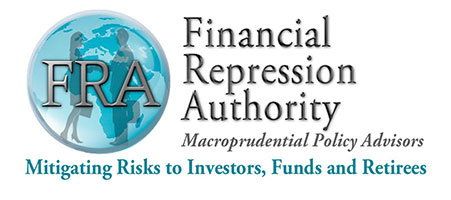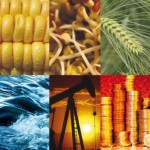
Nuclear Fusion as a solution towards the sustainable, green vision that the world has been striving towards has been severely downplayed and relatively unknown. Yet, key players in the energy sector are advancing nuclear fusion technologies, preparing the world for its commercialization as an energy source, presenting potentially enormous investment opportunities. Link to Bloomberg’s article on Nuclear fusion market could achieve a $40 trillion valuation. Does this make your hair stand on end? It should.
CedarOwl’s goal is to shine a light on innovative and profitable answers to the question: How can our global society transition into a silver-lined, sustainable future through technological advancement, idea sharing and investment?
In today’s posting, we explore the current opportunity presented by the advancements in nuclear fusion as an energy source.
- What is nuclear fusion, and why has it been downplayed?
- Does nuclear fusion make environmental, financial and economic sense?
- What are our nuclear fusion investment strategies that leverage key players advancing the technologies, that can help us attain outperforming return on investment (ROI)?
How Does Nuclear Fusion Energy Stack Up?
Industry experts including Doomberg and Goehring & Rozencwajg Associates have highlighted the challenges of the traditional so-called “green” renewable energies of wind and solar in being able to provide green and clean energy:
- Low Energy Return On Investment (EROI) – how much energy is required to generate a unit of usable power output – as wind is generally in the 10-to-1 range and solar is generally in the 5-to-1 range, compared to oil/gas/fossil fuels in generally the 30-to-1 range and nuclear fission in generally the 100-to-1 range
- Difficulties in sufficiently scaling to meet demands of current and future energy requirements globally – on required sizes, costs and commodity input availabilities
- Rising finance costs on wind and solar projects due to rising interest rates and inflation
- Declining abilities by heavily indebted governments looking to finance wind and solar projects, especially in the indebted western world characterized by unsustainable government debt and unfunded liabilities
And then there is also nuclear energy. There are two forms – nuclear fission and nuclear fusion.
Nuclear fission energy is available today, is scalable, has relatively high EROI and can be built economically. A reasonable energy transition strategy – towards lowering carbon emissions and migrating away from fossil fuels – is using a mix of all of the above and other developing energy sources, and has been identified by various industry experts including Doomberg – we fully promote this approach.
What about nuclear fusion? What is nuclear fusion energy, how is it different from nuclear fission energy, and why would it make sense to pursue its commercial development? Can it make financial and economic sense?
Nuclear Fusion Energy – Its Bad Wrap

Doomberg is a leading write on the substack platform, providing a special focus on energy. Doomberg is very bullish on nuclear energy in general – here is a link to the nuclear related articles if you would like to deepen your dive on the subject.
Scientific American Journal differentiates nuclear fusion energy from nuclear fission energy:
“Nuclear fusion—the merging of light atomic nuclei—has the potential to produce energy with near-zero carbon emissions, without creating the dangerous radioactive waste associated with today’s nuclear fission reactors, which split the very heavy nuclei of radioactive elements.”

So far this year, European scientists have made key breakthroughs in record-breaking amounts of energy made with fusion energy, highlighting the advancement of the technology.
If nuclear energy is such a great solution, then why have seemingly inferior technologies taken the lead in this race?
Fusion is not Fission. They’re both forms of nuclear energy but one is vastly different than the other. Fission energy power plants of old are the source of attitudes stemming from images of meltdowns, toxic radioactive waste and nuclear bomb material proliferation – even though many of these concerns and risks have been largely mitigated through technology and added-value applications and uses.

This isn’t your daddy’s nuclear energy.
In any case, nuclear fusion energy does not pose these risks to the environment and communities.
Summary of Advantages of Nuclear Fusion Energy
Ian Chapman, CEO of the U.K. Atomic Energy Authority (UKAEA), the British government’s nuclear energy organization says we simply have no other long-term way of getting to net-zero carbon emissions, especially because the global energy demand is projected to triple between 2050 and 2100. “Fusion is essential” to meet that need.
Tony Donné, EUROfusion’s program manager says “I can’t see what else it will be” – renewables such as wind and solar energy definitely have a role to play, but they aren’t likely to be enough.
Advantages of nuclear fusion energy:
· Abundant energy: Fusing atoms together in a controlled way releases nearly four million times more energy than a chemical reaction such as the burning of coal, oil or gas and four times as much as nuclear fission reactions (at equal mass). Fusion has the potential to provide the kind of baseload energy needed to provide electricity globally.
· Millions of years: Fusion energy commodity inputs are highly abundant globally.
· No CO₂: Scientists, environmental groups and organizations identify the challenge of lowering carbon emissions resulting from human-generated activities globally. While the science is debatable behind to what extent carbon emissions is affecting climate, everyone agrees that is it is best to minimize or eliminate polluting effluents such as carbon emissions into the environment, whether in the air, land or water. As such, nuclear fusion energy doesn’t emit harmful substances like carbon dioxide or other greenhouse gases into the atmosphere.
· No long-lived radioactive waste: Nuclear fusion reactors produce no high activity, long-lived nuclear waste. The activation of components in a fusion reactor is anticipated to be low enough for the materials to be recycled or reused within 100 years, depending on the materials used in the “first-wall” facing the plasma.
· Limited risk of proliferation: Fusion doesn’t employ fissile materials like uranium and plutonium. There are no enriched materials in a fusion reactor like ITER that could be exploited to make nuclear weapons.
· No risk of meltdown: A Fukushima-type nuclear accident is not possible in a fusion energy device. It is difficult enough to reach and maintain the precise conditions necessary for fusion—if any disturbance occurs, the plasma cools within seconds and the reaction stops. The quantity of fuel present in the vessel at any one time is enough for a few seconds only and there is no risk of a chain reaction.
· Cost: The power output of the kind of fusion reactor would likely be similar to that of a fission reactor (i.e., between 1 and 1.7 gigawatts). As with many new technologies, costs will be more expensive at first, when the technology is new, and gradually less expensive as economies of scale bring the costs down. Some links exploring the costs – link here, link here and link here.
Paul Dabbar, former Under Secretary for Science at the Department of Energy, said fusion does have the potential to one day be an affordable power source.
“The fuel is hydrogen,” said Dabbar. “Hydrogen is the most abundant element in the universe, and also on Earth. You know our ability to use that for energy in theory should be quite cheap.”
Link here to a great discussion on some latest developments of fusion on Faster, Please! with Fusion Industry Association CEO Andrew Holland.
How We Invest in Nuclear Fusion Energy

At the site of the International Thermonuclear Experimental Reactor (ITER), a poloidal field coil undergoes testing. Six of these ring-shaped magnets will steer plasma within the experiment. Credit: Alastair Philip Wiper
The key consideration we take on investing in nuclear fusion energy is our investment approach.
Our approach to investing is based on the principles of a unique school of thought known as the Austrian School of Economics, emphasizing great, high free cash flowing businesses with little or no debt or manageable debt, elements of scarcity and innovation. Our research team has distilled a set of observable and assessable metrics from these principles – there are several studies indicating these metrics have correlation with equity market outperformance, thus providing us with a statistical edge towards portfolio outperformance, although not necessarily guaranteed.
Further we look to assessing the extent to which the great businesses identified are aligned with the principles of Market Environmentalism, a set of 4 principles emanating from the Austrian School of Economics, which overall provide a market-based approach to helping the environment and promoting the 17 UN Sustainable Development Goals (SDGs). We feel this approach provides a better highway to meeting the SDGs versus approaches based on agenda-based environmentalism or approaches which rely on controlling, taxing or outright restricting human behavior, freedoms or liberties.
Given our investment approach in general, we provide consideration to investing in nuclear fusion with an emphasis on these factors:
· We invest in businesses meeting our metrics-based analysis highlighted above and aligned with the principles of Market Environmentalism – businesses that have relatively low or manageable debt, high free-cash-flows from legacy business units, significant to be able to fund the investment into the development of fusion energy on a large scale, and at the same time targeting equity outperformance as a dual mandate
· We invest in businesses that conduct significant fusion energy development or have ownership in private-based fusion energy development companies
· We invest in businesses that provide engineering and support, commodity inputs or specialized products/services in fusion energy power development and operations
To this end, we have identified several public-exchange traded companies which meet the above set of criteria. Let’s have a look at them here ..
Subscribe and Upgrade to Paid Subscription to read the entire Posting:
Disclaimer: This information and material contained in this post is of a general nature and is intended for educational purposes only. Opinions expressed are subject to change without notice and are not intended as investment advice or to predict future performance. This post does not constitute a recommendation or a solicitation or offer of the purchase or sale of securities. Furthermore, this post does not endorse or recommend any tax, legal, or investment related strategy, trading related strategy or model portfolio. The future performance of an investment, trade, strategy or model portfolio cannot be deduced from past performance. As with any investment, trade, strategy or model portfolio, the outcome depends upon many factors including: investment or trading objectives, income, net worth, tax bracket, suitability, risk tolerance, as well as economic and market factors. Economic forecasts set forth may not develop as predicted and there can be no guarantee that investments, trades, strategies or model portfolios will be successful. All information contained in this post has been derived from sources that are deemed to be reliable but not guaranteed.




 03/28/2024 - CedarOwl – How We are Investing in Green and Clean Nuclear Fusion Energy
03/28/2024 - CedarOwl – How We are Investing in Green and Clean Nuclear Fusion Energy













